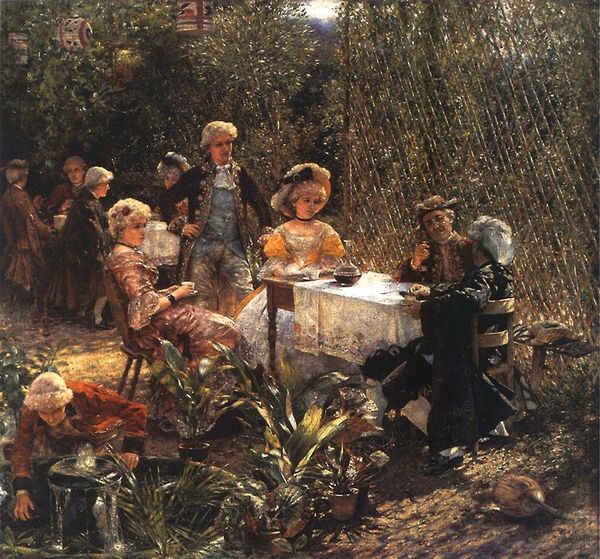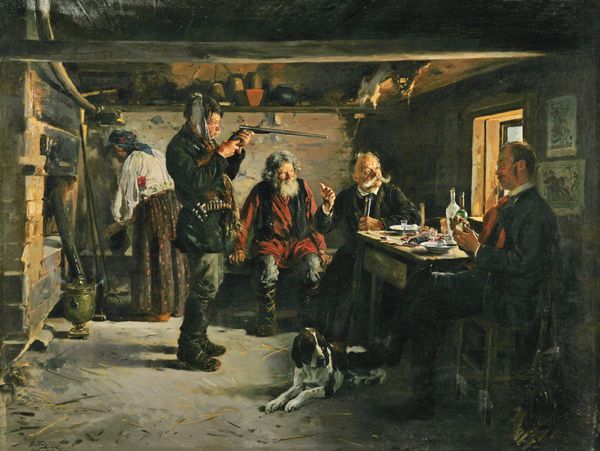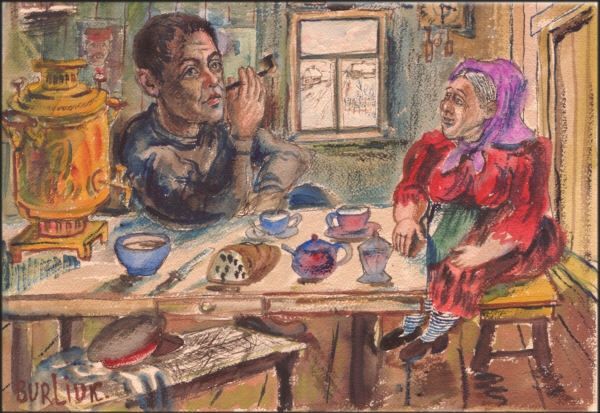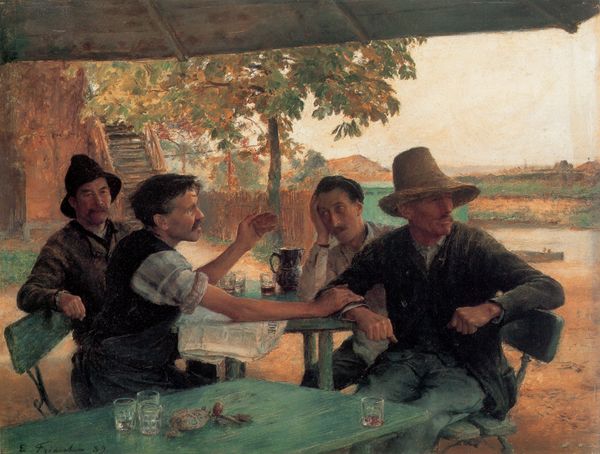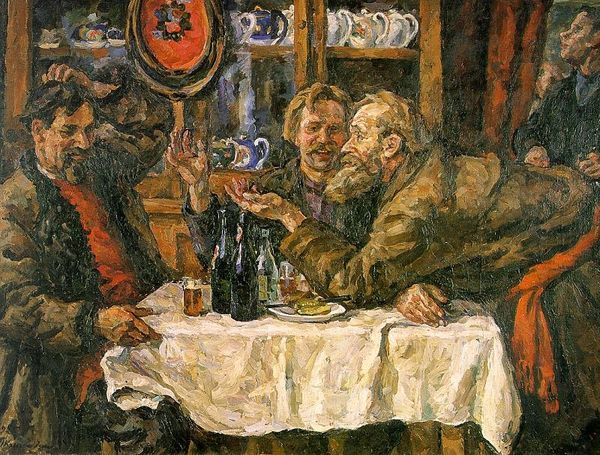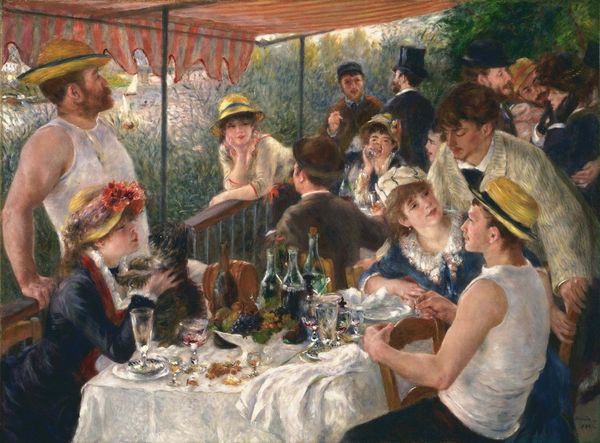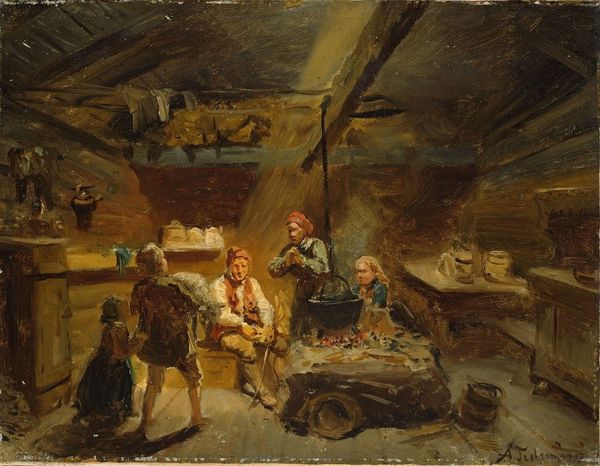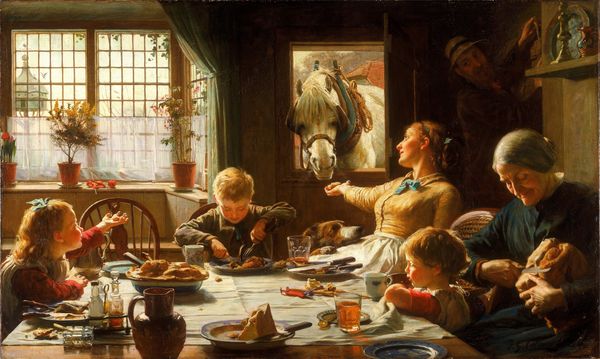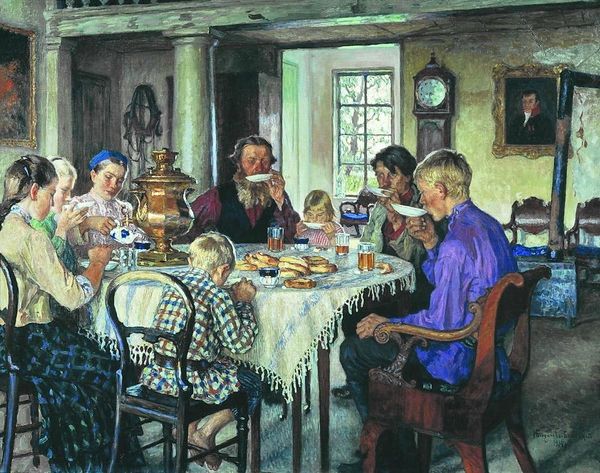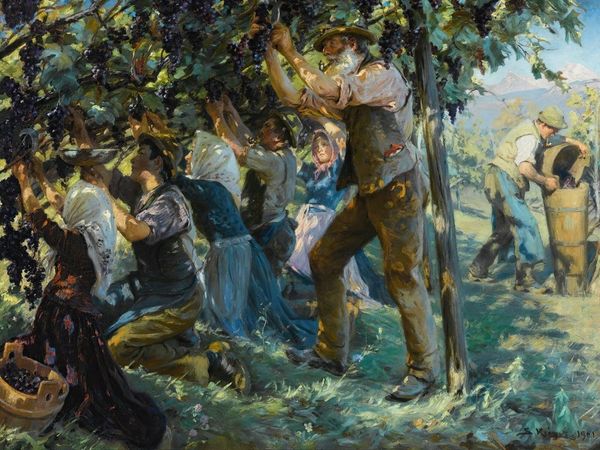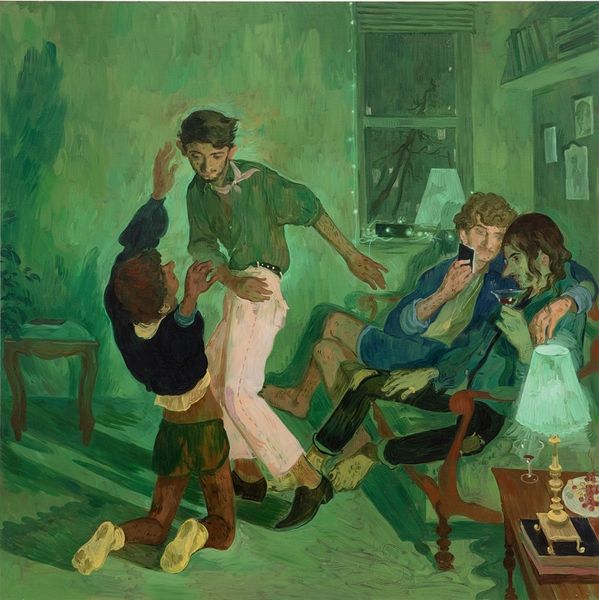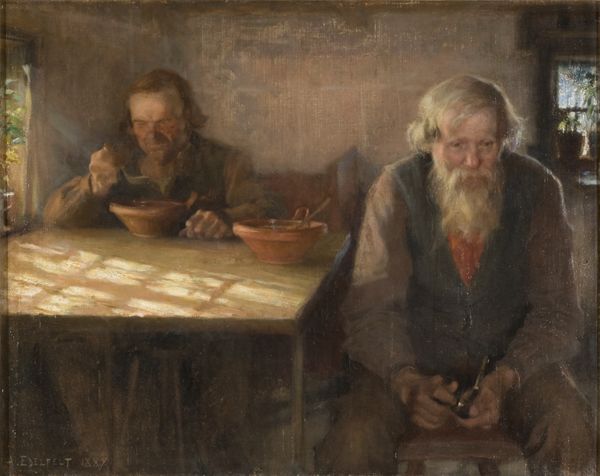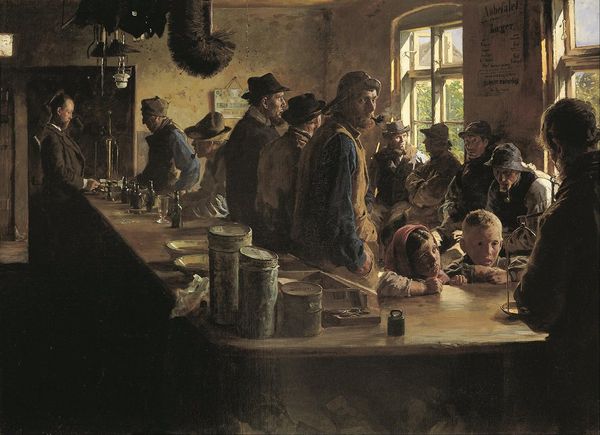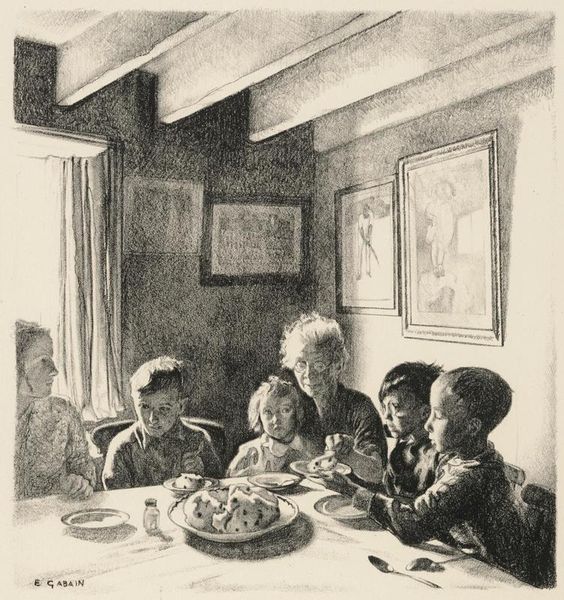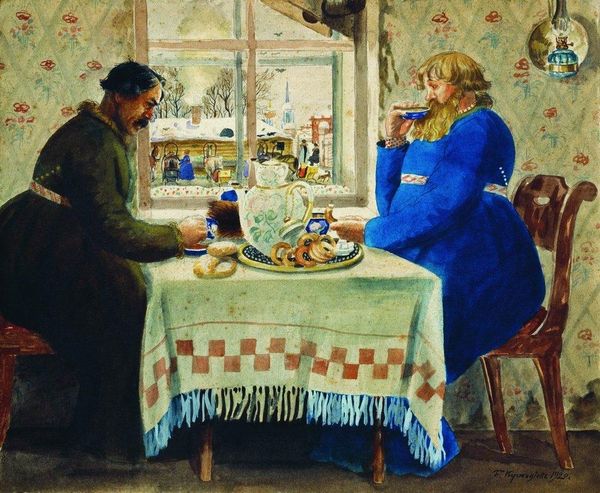
Copyright: Public domain
Editor: So, this is Vincenzo Irolli’s "Il Banchetto" from 1909, it seems to be done with gouache and oil. The brushstrokes are loose and lively and, the scene feels warm and inviting. What do you see in this piece that perhaps I'm missing? Curator: Beyond the Impressionistic brushstrokes and inviting warmth, consider the social context. "Il Banchetto," meaning "The Feast," presents a seemingly simple genre scene, but we can delve deeper. Who are these figures, and what does their gathering signify? Are they truly equal, or does the scene subtly highlight societal hierarchies and gendered expectations? Editor: That’s interesting. I was drawn to the convivial atmosphere and hadn't really considered inequality. Curator: The smiles are there, but think about representation. Who gets to be joyful and who is performing labour in the image? The pouring figure, for instance – how might we analyze their posture and attire in relation to the others? Could Irolli be making a statement, perhaps critiquing the idealized peasant imagery so common at the time? Editor: I guess I just saw them as a group of friends sharing a meal. But what you're saying is it is possibly infused with a critique of social dynamics? Curator: Precisely. It invites us to question not just what is depicted, but also whose perspective is being presented and what underlying messages it might carry. It's also worthwhile asking, who this artwork was for, what function was it meant to serve in Neapolitan society in the early 20th century? Editor: This has totally changed my perception of the painting. I'll definitely look at art with a more critical eye from now on. Curator: Wonderful. Art is never truly neutral. Recognizing these embedded social and political narratives empowers us to engage with it more meaningfully.
Comments
No comments
Be the first to comment and join the conversation on the ultimate creative platform.
